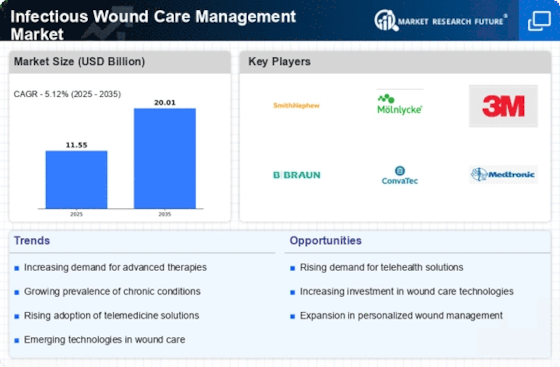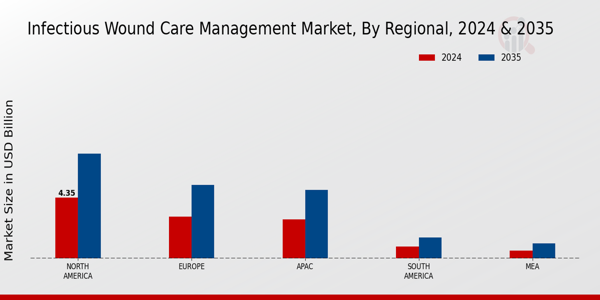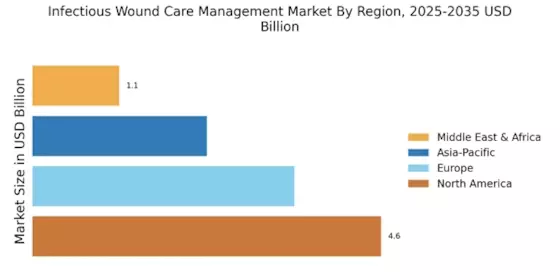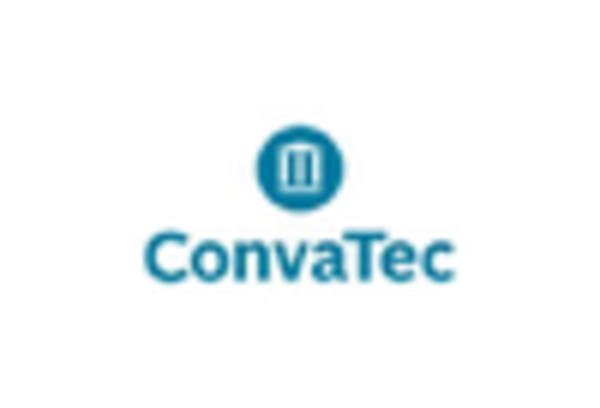Increasing Healthcare Expenditure
The rise in healthcare expenditure across various regions is a significant factor driving the Infectious Wound Care Management Market. Governments and private sectors are investing more in healthcare infrastructure, which includes wound care management. This increase in funding allows for better access to advanced wound care products and services, ultimately improving patient outcomes. Market analysis suggests that as healthcare budgets expand, there will be a corresponding increase in the availability and utilization of effective wound care solutions. This trend is expected to bolster the Infectious Wound Care Management Market, as healthcare providers seek to implement comprehensive wound care strategies to meet the growing needs of patients.
Rising Incidence of Chronic Wounds
The increasing prevalence of chronic wounds, such as diabetic ulcers and pressure sores, is a primary driver for the Infectious Wound Care Management Market. Chronic wounds are often associated with underlying health conditions, including diabetes and vascular diseases, which are on the rise. According to recent estimates, chronic wounds affect millions of individuals, leading to a substantial demand for effective wound care solutions. This trend is likely to continue, as the aging population and lifestyle-related diseases contribute to the growing incidence of these wounds. Consequently, healthcare providers are increasingly focusing on innovative wound care management strategies to address this challenge, thereby propelling the Infectious Wound Care Management Market forward.
Growing Awareness of Infection Control
There is a heightened awareness regarding infection control in wound management, which is driving the Infectious Wound Care Management Market. Healthcare professionals and patients alike are becoming more cognizant of the importance of preventing infections in wounds, particularly in surgical and chronic cases. This awareness is leading to increased demand for products that offer antimicrobial properties and advanced infection control measures. As a result, manufacturers are focusing on developing wound care solutions that incorporate these features, thereby enhancing their market presence. The emphasis on infection control is likely to continue influencing purchasing decisions, further propelling the growth of the Infectious Wound Care Management Market.
Advancements in Wound Care Technologies
Technological innovations in wound care are significantly influencing the Infectious Wound Care Management Market. The introduction of advanced wound dressings, negative pressure wound therapy, and bioengineered skin substitutes has transformed the treatment landscape. These technologies not only enhance healing rates but also reduce the risk of infections, which is crucial in managing infectious wounds. Market data indicates that the adoption of these advanced technologies is expected to grow, driven by their effectiveness and the increasing awareness among healthcare professionals. As a result, the Infectious Wound Care Management Market is likely to witness a surge in demand for these innovative solutions, reflecting a shift towards more effective and efficient wound care practices.
Rising Demand for Home Healthcare Solutions
The shift towards home healthcare solutions is emerging as a key driver for the Infectious Wound Care Management Market. Patients increasingly prefer receiving care in the comfort of their homes, which has led to a growing demand for portable and easy-to-use wound care products. This trend is particularly evident among the elderly population and those with chronic conditions who require ongoing wound management. Market data indicates that the home healthcare segment is expanding rapidly, as it offers convenience and reduces the burden on healthcare facilities. Consequently, the Infectious Wound Care Management Market is likely to adapt to this demand by providing innovative solutions tailored for home use, thereby enhancing patient satisfaction and outcomes.



















Leave a Comment